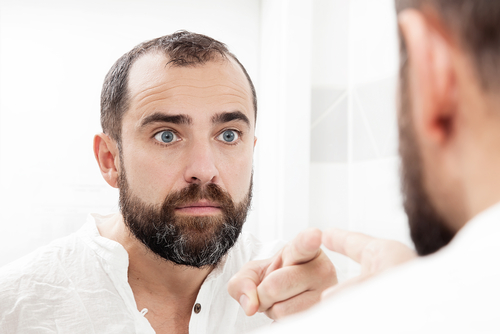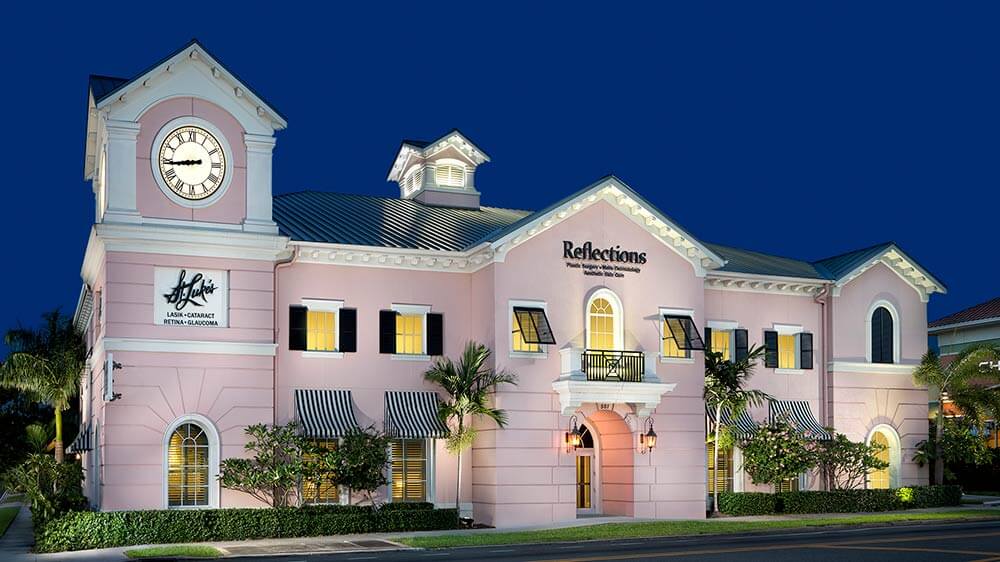
With age, it’s normal to notice your body feeling like it can no longer do what it once could. One of these changes is that your muscles tend to get weaker.
All muscles in your body can get weaker, including those in your face. Certain weak facial muscles can contribute to sagging eyelids, also known as ptosis.
Ptosis can affect anyone of any age, but it’s most common in older adults. One way of treating ptosis is by having a surgical procedure called a blepharoplasty. Keep reading to find out if blepharoplasty can effectively treat ptosis!
What is Ptosis?

Ptosis is a condition that occurs when the upper eyelids droop and cover part of the eye. It’s caused by weakness in the muscle that raises the upper eyelid, called the levator muscle.
The levator muscle often stretches out as a result of aging. But it can also become weak for other reasons.
Many children receive a diagnosis of congenital ptosis. Congenital ptosis occurs if you’re born with weak levator muscles.
You may also develop ptosis due to an eye injury. But the most common cause of ptosis is as a result of the aging process and getting older.
Blepharoplasty

Blepharoplasty, or eyelid surgery, is an oculoplastic procedure that removes the excess skin and fat around the eyelids. Removing this excess fat and skin helps keep the eyelids from weighing too much and allows the levator muscle to no longer need to work as hard to hold them up.
You can have a blepharoplasty performed on both the upper and lower eyelids. However, depending on the patient, Dr. Nicolas Villanustre may only choose to perform blepharoplasty on the upper or lower lids.
When performed on the upper eyelids, the procedure can restore your vision by removing the drooping eyelid from your visual field. But you can also have blepharoplasty as a purely cosmetic procedure.
Is Blepharoplasty a Medically Necessary Procedure or a Cosmetic Procedure?
A blepharoplasty can be both a medically necessary procedure and a cosmetic procedure. The answer depends on the patient and their reasons for undergoing eyelid surgery.
Knowing why you’re interested in undergoing a procedure like a blepharoplasty will help Dr. Villanustre determine if blepharoplasty should be a cosmetic procedure or if it’s medically necessary. Suppose you have ptosis that you want to treat because your eyelids obstruct your field of vision.
In that case, blepharoplasty is often considered a medically necessary procedure to restore your vision and ability to see. If you have ptosis and it’s affecting your ability to see, most health insurance plans will cover at least part of the cost of the procedure.
You may also want your ptosis treated for cosmetic reasons, as drooping upper eyelids may make you look older than you are or more tired. If Dr. Villanustre can prove that your eyelids are making it more challenging for you to see, your health insurance may still cover part of the cost of the procedure.
But you may have sagging lower eyelids. Having drooping or sagging lower eyelids is not ptosis.
Treating the Lower Eyelids for Cosmetic Reasons

In most cases, treating the lower eyelids is purely performed for cosmetic purposes, meaning lower blepharoplasty is not typically covered by health insurance. However, it may still be well worth having a blepharoplasty to feel more youthful and less self-conscious about your appearance.
Surgery on only your lower eyelids can still be cost-effective even if your health insurance doesn’t help cover it. Affordable financing options like CareCredit help make these procedures far more affordable.
Because you can have your upper and lower eyelids treated simultaneously, you can undergo one procedure to treat ptosis while treating any bags under your eyes. If you’re having ptosis treated to restore your vision, chances are good insurance will still help pay for the procedure, at least in some capacity.
Blepharoplasty Candidates

If you’re an adult with ptosis and sagging or drooping lower lids, there’s an excellent chance you may qualify as a candidate for blepharoplasty. To undergo the procedure, a key candidacy factor is being in good health.
This is true whether you’re undergoing a blepharoplasty for cosmetic or medical reasons. What matters is that you’re healthy enough to recover after any surgical procedure, blepharoplasty included.
The procedure will treat your sagging or drooping eyelids. It’s also essential to have the right expectations before having blepharoplasty.
Blepharoplasty is an outpatient procedure, meaning you’ll go home the same day after it’s completed. Recovery will take a few weeks to achieve. During that time, you’ll be able to do most things.
You’ll have some swelling and bruising around your eyes as your eyelids heal. Taking care of yourself ensures you look and feel like yourself after only a few weeks.
Develop a Proper Skincare Routine
You should be aware that after having a blepharoplasty, the results are usually long-lasting. The best way to ensure your eyelids look their best after a blepharoplasty at Reflections at St. Luke’s is to exercise proper skincare and develop a routine you can follow.
Taking part in a routine skincare program will help ensure you maintain your results for many years after having a blepharoplasty. Talk to Dr. Villanustre about a good skincare routine before having a blepharoplasty to ensure you can preserve the results.
You can also ask Dr. Villanustre any questions or concerns about the procedure. Asking these questions will ensure you’re fully informed and comfortable before undergoing this procedure. Having a foundation of trust with any surgeon is essential to ensure you know what to expect and have realistic expectations during the healing process.
Do you have ptosis? Take the next step towards feeling like yourself again by scheduling an appointment at Reflections at St. Luke’s today! If you’re tired of droopy, saggy eyelids standing in your way, do something about it!









